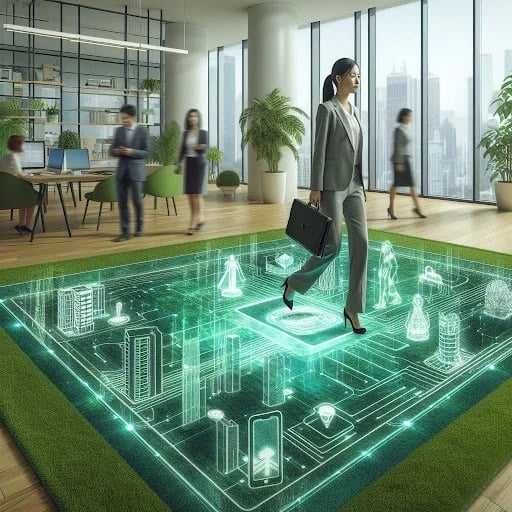


SMART FLOOR TECHNOLOGY
integrates sensors and technology into the floor to collect data and provide interactive features, moving beyond traditional flooring to enhance safety, security, and efficiency. It is used in both commercial and residential settings, and its capabilities range from fall detection in healthcare to energy optimization in office buildings.
How smart flooring works
Pressure sensors: These are embedded beneath the surface of the floor to detect weight and movement. Some systems use multiple load cells under each tile to determine the exact position of a person.
Data collection: The sensors continuously monitor foot traffic, movement patterns, and other data points. This information is sent to a central software platform, which uses artificial intelligence (AI) to analyze the data and trigger specific actions.
Connectivity: Smart flooring systems can connect to other smart devices in a building, such as thermostats, lighting, and security systems. This allows for automated responses based on real-time occupancy data.
Energy harvesting: Some floor tiles use piezoelectric sensors that convert the kinetic energy from human footsteps into electrical energy, which can then be stored in batteries.
Key applications and benefits
Health and safety
Fall detection: In senior living facilities, hospitals, or private homes, smart flooring can instantly detect if someone has fallen and send an alert to a caregiver or emergency services. Some systems, like the Elsi Smart Floor, use motion tracking to detect when a resident has been motionless for an unusual amount of time.
Mobility tracking: Gait analysis, which tracks walking patterns, can help healthcare professionals monitor a person's mobility over time. Changes in gait can be an early indicator of health issues, such as dementia or Parkinson's disease.
Optimized patient care: Smart floors can help staff in healthcare settings by identifying the nearest available caregiver during an emergency or by tracking staff movement to optimize floor plans.
Energy and cost efficiency
Occupancy-based climate control: By detecting which rooms are occupied, smart flooring can automatically adjust heating, ventilation, and air conditioning (HVAC) systems. This can lead to significant energy savings by only conditioning spaces that are in use.
Reduced utility costs: For example, in tests with Scanalytics smart flooring, the U.S. Department of Energy documented a 34% energy savings on HVAC usage.
Reduced maintenance: Smart flooring can help optimize cleaning schedules by providing data on which areas receive the most foot traffic, allowing cleaning crews to focus their efforts more efficiently.
Security
Intrusion detection: When a security system is active, smart flooring can detect an intruder's movement and send an immediate alert to the owner or police.
Anonymous tracking: Unlike cameras, which can raise privacy concerns, smart flooring provides an anonymous way to monitor movement in sensitive areas like server rooms.
Retail and commercial
Customer behavior analysis: Retailers can use smart flooring to understand customer movement patterns, identify popular areas, and optimize product placement to boost sales.
Interactive experiences: Smart floors can be integrated with lights or other media to create interactive displays. For instance, a floor can light up to highlight a product or react to a customer's movement.
